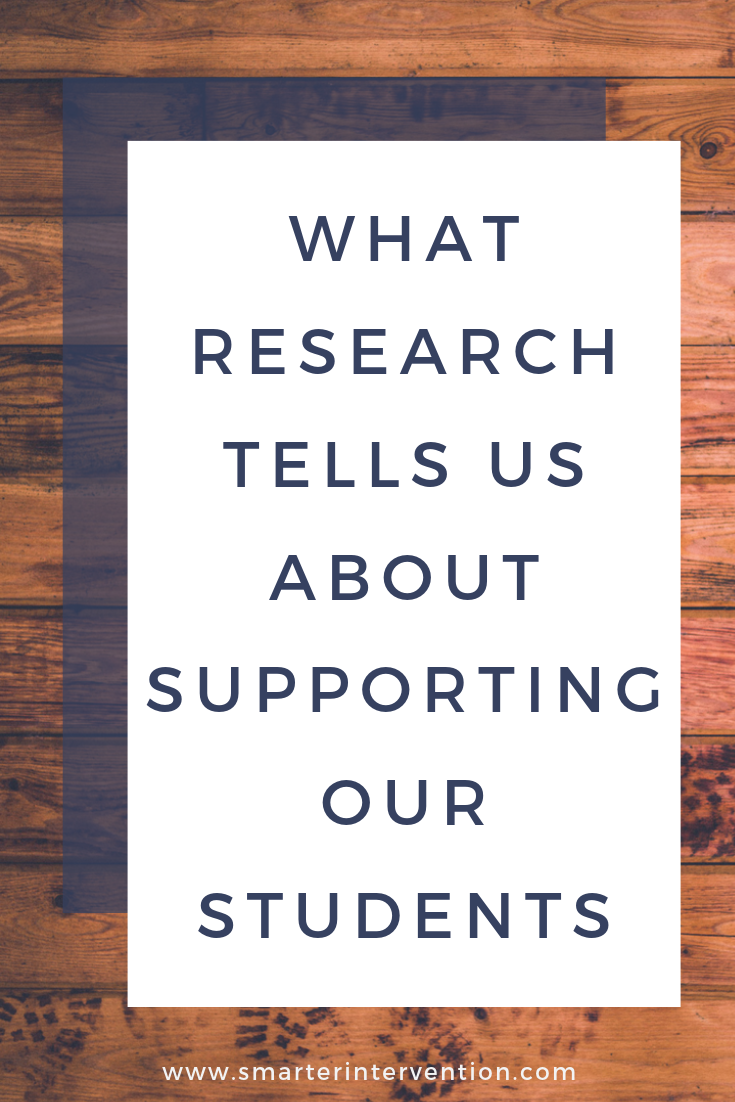What Research Tells Us About Supporting Our Students
One of the things we hear over and over is that we need to be using evidence-based practices in our intervention. We are told that using evidence-based intervention is critical to student success. I am sure that you have heard not to use resources that aren’t evidence-based.
But what does that even mean?
What is required for literacy intervention to be considered evidence-based?
Well, a few things - 3 to be exact.
1 - The intervention should be based on scientific research
The intervention has to be grounded in theories and methodologies that are supported by empirically reviewed research studies.
This means that the publisher of the program cannot be the one to make all the claims that it works, it needs to be reviewed by other people who have no financial investment or ties to the theory/methodology/program.
But there is an important distinction here because -
What it does not mean is that the individual program or method has to have undergone independent research studies. The amount of funding and time it would take to get really good, valuable, intervention materials out into the world ends up costing students. If every single program needed to undergo independent trials and empirical validation we would be waiting years and years after knowing that something was working to have it presented to our students.
2 - The intervention should be analyzed and designed by experts in the field using clinical judgment and experience
It’s really important that we have people who are applying theories and programs in alignment with the research that has been conducted. Being evidence-based doesn’t mean every program you use must have undergone the level of scientific evaluation required of a comprehensive research study, but rather the theories and principles being applied should be analyzed carefully to see where the alignment with previous research exists.
Experts working in the field often see patterns and trends that just can’t be measured even with the best research design and therefore, it is critical that an evidence-based practice takes into account experts’ experiences in providing high-quality intervention incorporating areas of need into an intervention program.
3 - The intervention should be in line with educational standards
Evidence-based practice traditionally takes into account the values of those being serviced by the intervention. In this case, educational standards should be aligned with the values of our communities, parents, and students. We need to recognize what our end goal with intervention programs truly is and make sure that we are meeting the goals of our students in any education program.
Often programs will claim to raise test scores, and many do, for skills that do not generalize to true meaningful outcomes. This means that the program would not be considered evidence-based because it’s not meeting the goals of those it claims to serve. Some programs can increase test scores in areas that we may find low in a diagnostic evaluation of dyslexia (e.g., the ability to rapidly see and name color names on a page) but these score increases don’t actually help students to read any better. Therefore these programs claim the interventions are effective, but they are not effectively creating meaningful outcomes (e.g., learning how to read) and therefore should not be considered evidence-based.
So now that we know what it means to be evidence-based, we can begin to think about:
What does the research say about supporting students with dyslexia?
Three things come up again and again and again:
1 - Instruction needs to be systematic, sequential, cumulative
Basically, it needs to follow an order, a pattern that builds on itself to be effective.
2 - Instruction needs to be explicit
We cannot teach incidentally, we cannot assume that students will pick up on things unless we explicitly teach them. Research has recently come out saying that students with dyslexia struggle with implicit learning as a whole - they benefit from explicit instruction not just in reading but across academic areas.
3 - Instruction needs to be targeted
Stay tuned on this one because next week we will be talking all about how to target instruction using data. >>Click here to read that blog! <<
So all this to say, when you are looking for evidence-based intervention in literacy make sure the program you are using:
Has a scope and sequence that builds progressively
Teaches reading and spelling rules explicitly
Reviews concepts as needed
Has built-in progress monitoring to help target instruction specific to your students
>>>Click here to grab our free evidence-based reading intervention checklist!<<<
If you are looking for more information about structured literacy intervention and what the research actually supports, grab our Science of Reading Blueprint. This blueprint will help you understand the 3 key scientific models that drive effective literacy instruction, learn how to integrate the research into practice, and provide simple checklists that will help you weave the science of reading into your instruction.

